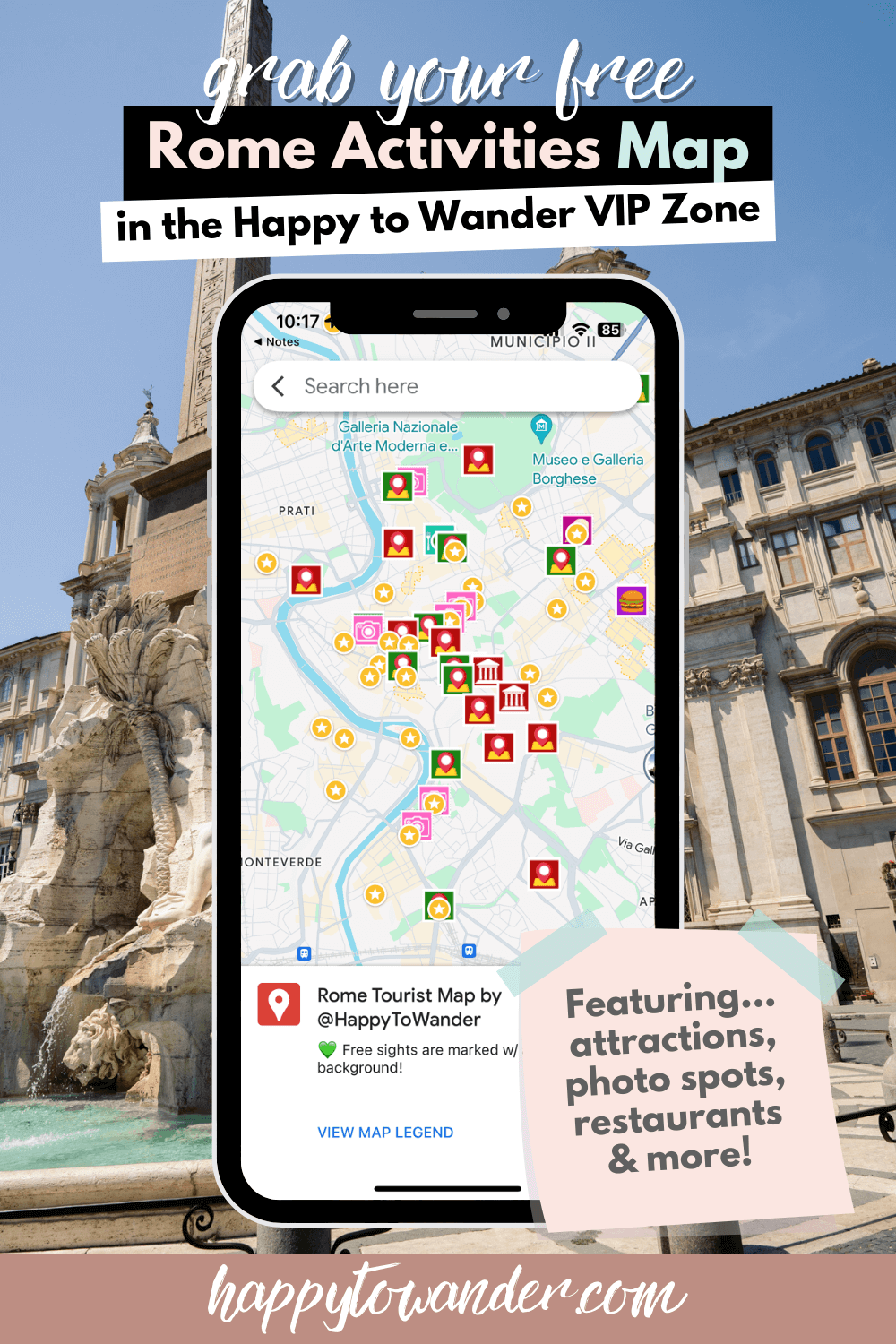*FYI - this post may contain affiliate links, which means we earn a commission at no extra cost to you if you purchase from them. Also, as an Amazon Associate I earn from qualifying purchases. Check out our Privacy Policy and Disclosure. for more info.
With its undisputed reputation as one the world’s most amazing cities, there’s truly no shortage of unique and fun things to do in Rome.
After three visits, I’m still left with a miles-long list of must-dos, whether that’s ancient ruins lurking in the most unexpected locations, cool rooftop bars overlooking said ruins, or one of the many museums that call this city home.
So, whether you only have three days in Rome or longer, here are some unique things to do in Rome that you absolutely will not regret… along with some practical tips to help you visit in the most painless way.
My Free Map of Things to Do in Rome
For a free map that includes all the activities below (plus recommendations for food, drink, etc.), head to my VIP Zone!
1. Tour the Colosseum
Let’s start with the obvious.
It’s the most famous monument in Rome, and an enduring symbol of Italy as a whole, so it makes sense to kickstart our list of things to do in Rome with the Colosseum, also known as the Flavian Amphitheatre.
This incredible structure dates back almost 2000 years, and remains the largest standing amphitheatre in the world.
For centuries, it was here that Rome’s infamous gladiator fights and animal hunts took place, often to crowds as large as 80,000. Today, it can receive up to 30,000 visitors a day, making it one of the most visited monuments in the entire world.
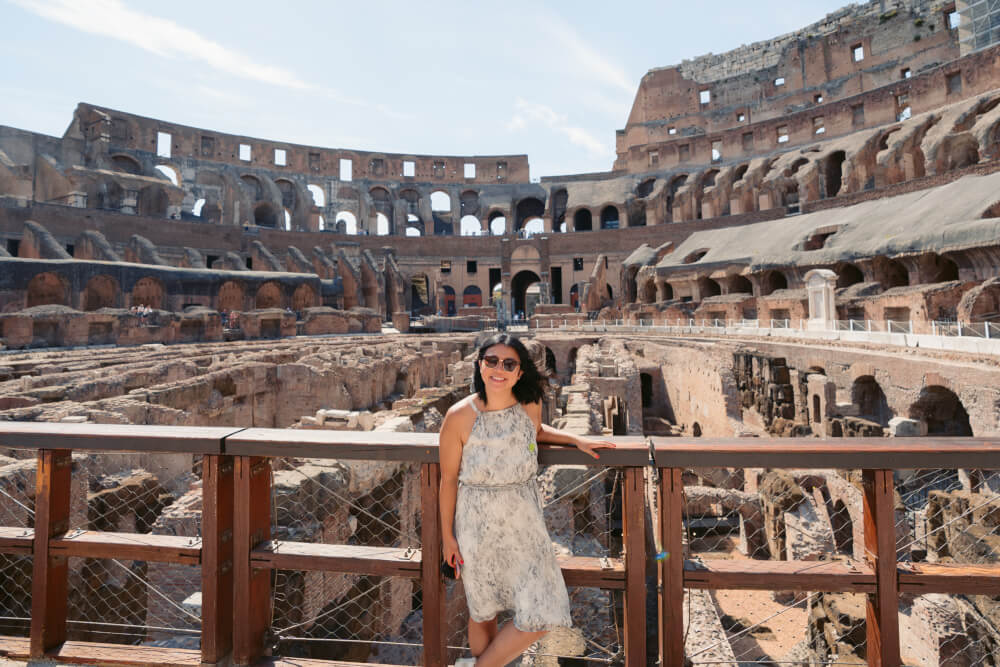
And, thanks to a recent development, the Colosseum’s Underground area is open to visitors in full for the first time in its almost 2000 year history, making a visit to the inside an absolute must-do.
As I mention in my Rome travel tips post, you should 1000% make sure you get tickets in advance here, or consider booking an after-hours tour like this one for a unique, less crowded experience. This tour also guarantees you the last slot of the day so that could work too.
PRO TIP: It can be difficult to get a good photo of the Colosseum due to its ginormous size, but the perfect vantage point for a shot or two is Via Nicola Salvi, where a perfectly photogenic perch awaits.
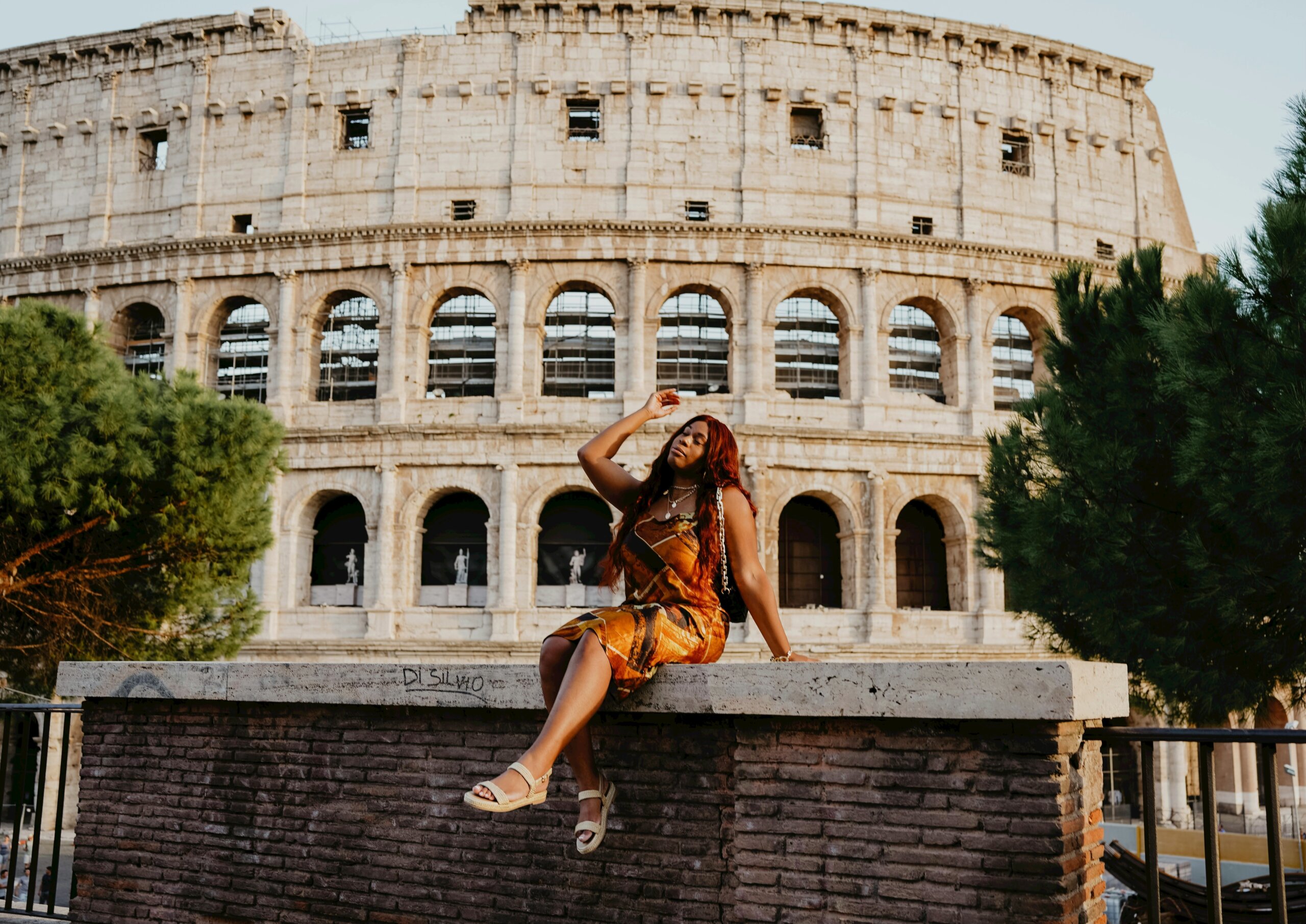
2. See the Roman Forum & Palatine Hill
Next on our list of Rome must-dos is the Roman Forum and Palatine Hill.
A visit here is included in the ticket you buy for the Colosseum, so you might as well… but I’ll be honest: this is a set of Roman attractions that can be tough to appreciate without the help of a tour guide or guidebook.
These days, the Roman Forum is mainly a field of ruins with minimal signage to help you out, so without knowing the historical context, you’d have no idea how important and epic this space was once upon a time and (to be totally honest), without this important context, a visit here can be kind of boring.
Long the epicenter of commercial and government activity in Ancient Rome, this multi-purpose space would have been used for countless aspects of daily life, from elections and social gatherings to religious ceremonies and criminal trials. In other words, you’re walking directly through the heart of Ancient Rome… or what remains of it, anyway.
I do think the Roman Forum is a cool Rome must-see, but make sure you at least learn a bit about it before you visit!
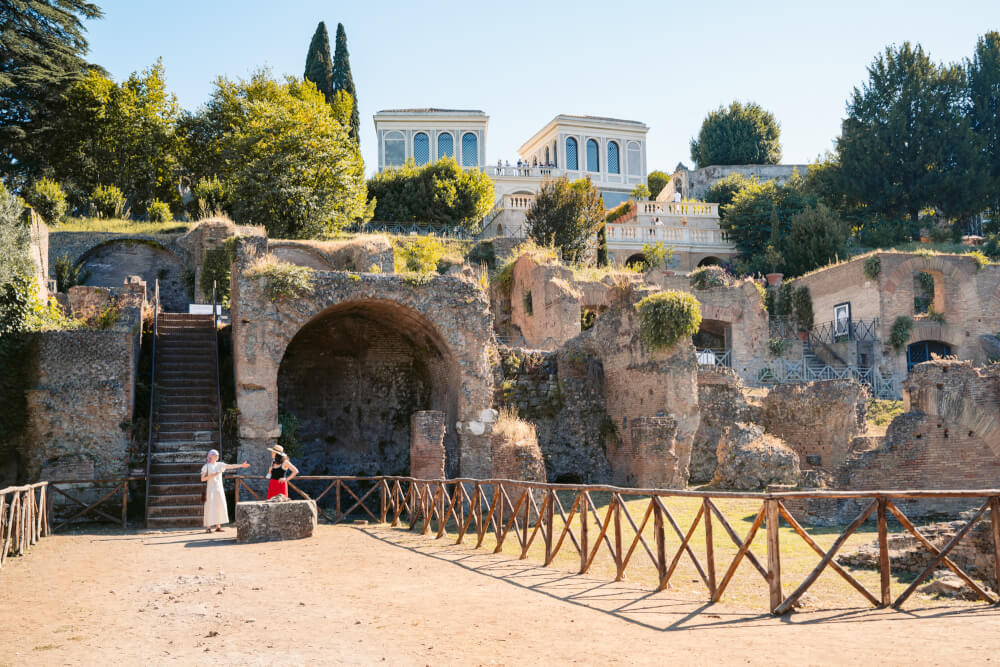
3. Visit the Pantheon
Of all the buildings that remain from Ancient Rome, the Pantheon is by far the best-preserved, dazzling visitors even 2000 years after it was originally constructed.
And there’s a lot of reasons to visit – after all, the Pantheon houses tombs for some of Rome’s most famous figures, including Italy’s 1st King, King Vittorio Emanuele II and Ninja Turtle namesake, the famous painter Raphael.
It’s also home to the largest unsupported concrete dome in the world, weighing in at a shocking 4535 tonnes. That’s about 900 elephants worth of concrete, or the weight of around 275 million McNuggets. Yes, I did the math.
At the apex of this dome is the 27 feet wide oculus, which floods a bright ray of light into the Pantheon… and rain when the weather feels moody. That’s why you’ll find 22 manholes on the Pantheon’s floor – to filter said rain when it pours. This is definitely one of the most incredible places to visit in Rome, so make sure you add it to your list!
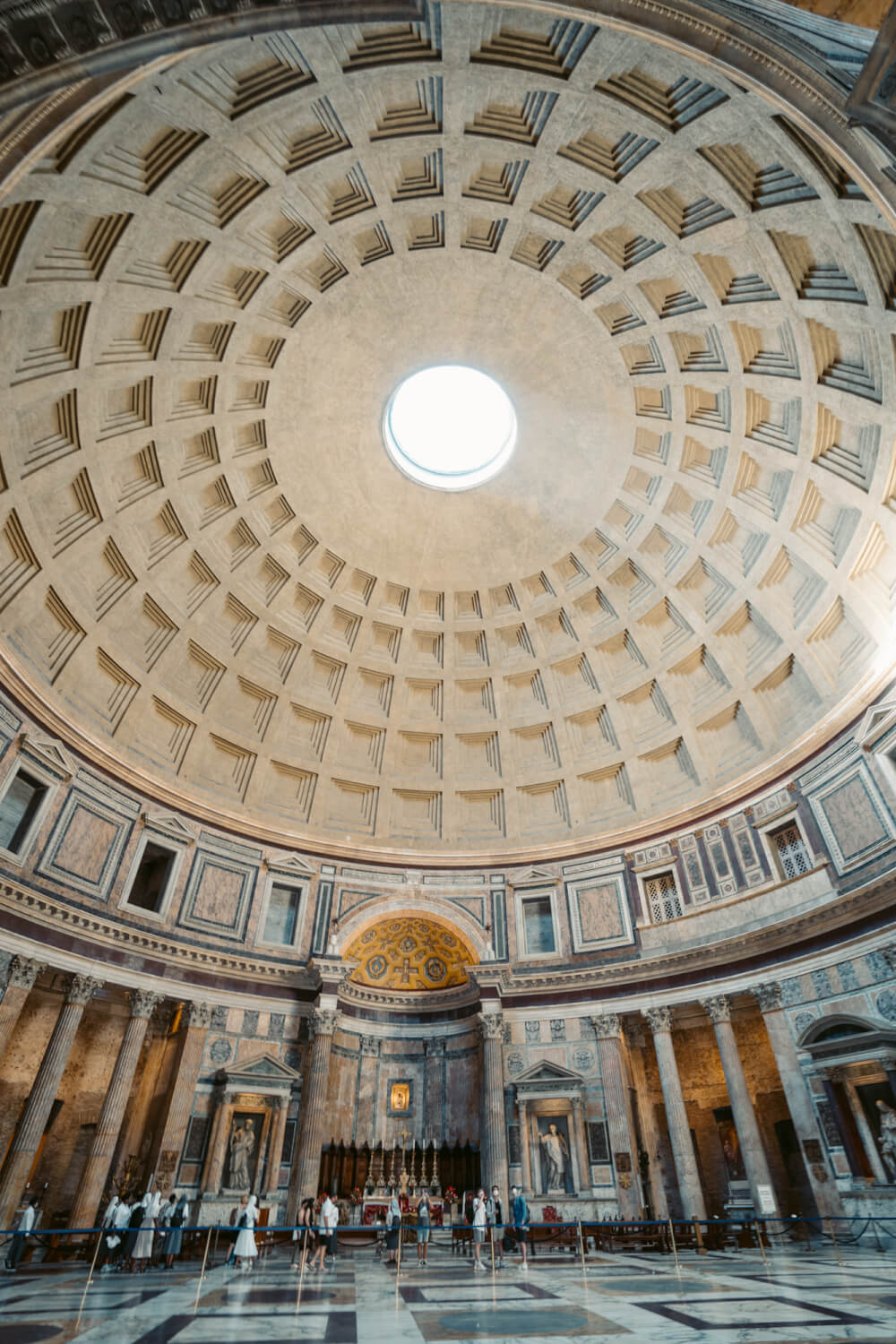
4. Admire Piazza di Spagna and its Spanish Steps
This square is famous for a number of reasons. Firstly, its name comes from the Spanish Embassy to the Vatican which has been housed in this square since the 17th century (and may even be the oldest embassy in the world).
Famous English poet John Keats also spent the final days of his life here, at 26 Piazza di Spagna which is today home to the Keats-Shelley House. Ironically, the museum’s two namesake poets were apparently not that close.
But all that said, the starring attraction of the square today is no doubt the (135) Spanish Steps, whose picturesque Baroque aesthetic is immortalized in pop culture thanks to plenty of film features including La Dolce Vita.
Granted, they are just stairs (and mainly a photo opp these days)… but they’re iconic, and definitely worth a visit when in Rome. Just don’t be surprised if the walk up leaves you a bit more out of breath than you expected. The stairs’ unique forced perspective creates a trompe d’oeil effect that makes them look less steep than they actually are.
NOTE: If you want to actually see the Steps without hundreds of people stomping around, the only way is to go very early in the morning. Luckily we stayed at this hotel right on the steps so I could grab an early morning shot like this (with only one tiny photobomber in the background).

5. Gawk at the Trevi Fountain
Speaking of overcrowded places you should visit early in the morning, another Rome must-do is the Trevi Fountain, perhaps one of the most famous fountains in the world and one of the most beautiful sights in Rome… especially after its gleaming new makeover in 2015 funded by fashion giant, Fendi!
Situated at the end of the famous Acqua Vergine Viaduct, its name comes from its location at the crossroads of three streets (tre vie). At 65 feet wide, this monumental fountain is best known for its impressive marble sculptures and of course its dreamy blue hues.
The fountain’s theme? ‘Taming of the Waters’, with three main statues: Oceanus, Abundance, and Health, along with other smaller statues that represent the fertility of earth. The project took a staggering 30 years to complete, which is about how long it takes for you to get your turn at the more coveted photo corners.
… I’m kidding! But only slightly. Today, millions of tourists come for a chance every year to ogle the fountain and partake in the classic tourist ritual of throwing a coin (or three) over their left shoulder… The 1st to ensure a return to Rome, the 2nd for romance, and the 3rd for marriage. It’s an iconic Rome must-do for sure – just be prepared for crowds and plan to come at off-peak times if you can.
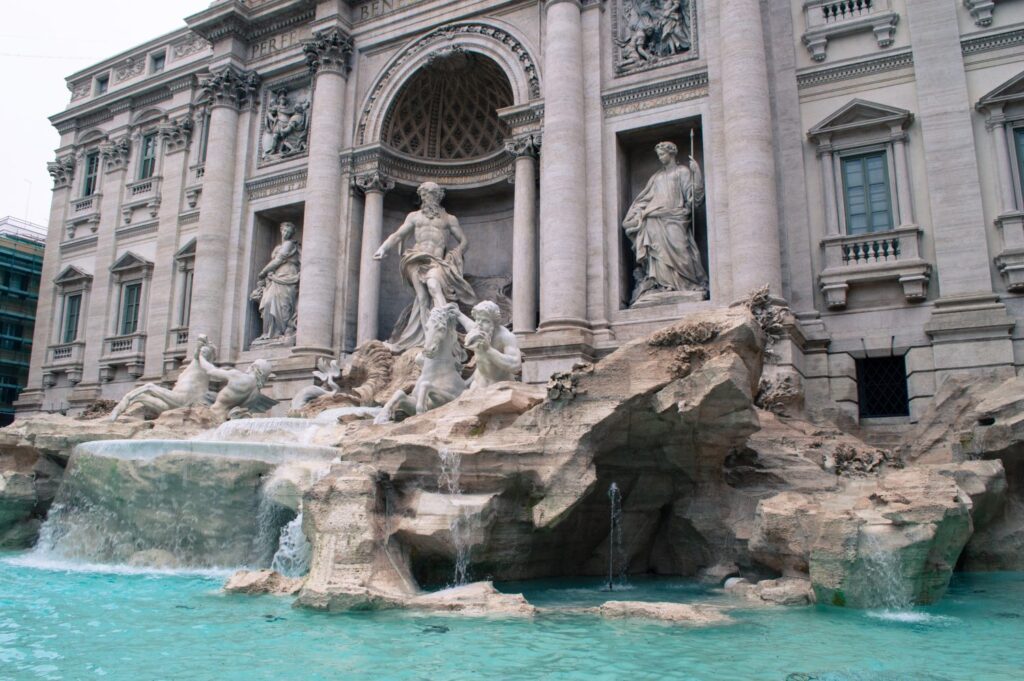
BONUS: Directly opposite the Trevi Fountain lies Santi Vincenzo e Anastasio a Trevi, a church with a unique and intriguing history. In 2002, Pope John Paul II made a generous gesture by granting the use of this church to the Bulgarian Orthodox Church. However, there’s an extraordinary twist to this tale – within its walls, 22 hearts of past popes rest in marble urns. As you step inside, you’ll find a list of these popes to the left of the altar, spanning from the reign of Sixtus V in 1583 to Leo XIII in 1903. The custom of separating the organs from the bodies of the deceased popes, known as “praecordia,” was a practice aimed at preserving them while funeral arrangements were made.

6. Visit the epic Art Nouveau of Galleria Sciarra
From the Trevi Fountain, it’s only a 2 minute walk over to one of the prettiest hidden courtyards in Rome: Galleria Sciarra.
This unassuming walkway (tucked behind a McDonalds, no less) is a lovely hidden gem full of beautiful frescoes and artwork to admire, with a gorgeous glass and iron ceiling that makes the space feel impossibly grand.
… Especially when you consider that it’s simply home to offices these days!
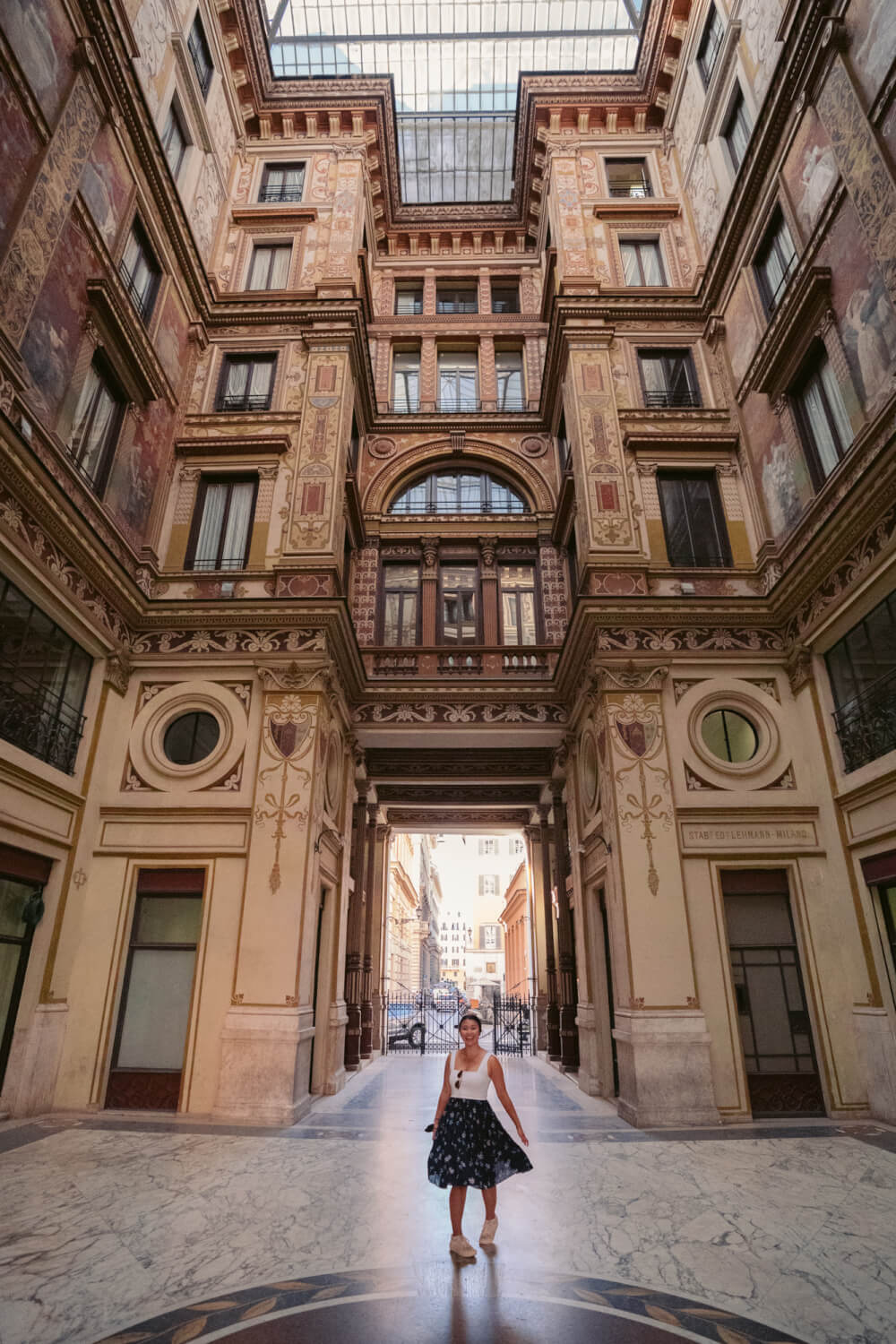
7. Stop by Piazza del Popolo
Translated as “The People’s Square”, Piazza del Popolo is considered one of Rome’s most important (and aesthetically pleasing) squares, housing a number of attractions including the Leonardo da Vinci Museum, the twin churches of Santa Maria in Montesanto and Santa Maria dei Miracoli, and the Basilica di Santa Maria del Popolo.
On a more macabre note, this square was once a popular setting for public executions, which went on as recently as 1826. This history is so recent in fact that there are written accounts of these executions from famous writers like Charles Dickens, who wrote about witnessing a beheading on this very square.
Side note: You can actually read a weirdly detailed list here of people who were executed here (along with their crimes).
As I mentioned, lots of cool things to do in Rome can be found in this square, but I’d recommend even a quick stop just to soak in the neoclassical grandeur and residual execution-y vibes.
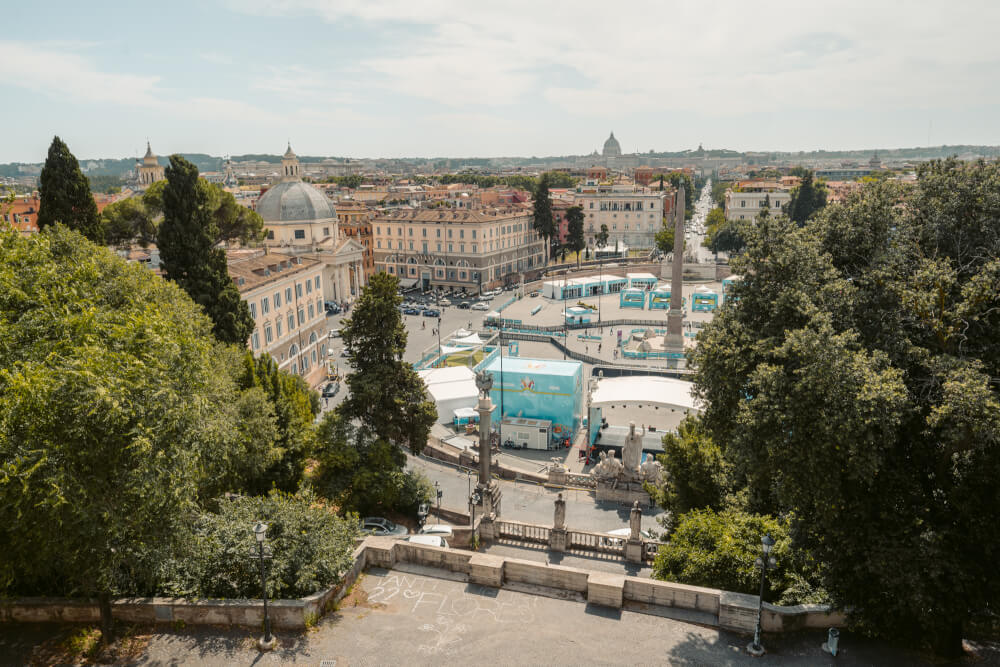
8. Admire Piazza Navona
Another must-see square in Rome is the Baroque masterpiece known as Piazza Navona, with a unique oblong shape thanks to its history as the former site of Domitian Stadium, which was built back in the 1st century to introduce Greek-style athletics and (non-violent) sports to the Roman public, whose main source of entertainment was pretty much watching slaves murder each other with cameos from lions, tigers, and bears.
Unfortunately, Romans far preferred their bloody gladiator games, and over the centuries, the stadium fell into disuse, eventually being pillaged for building materials.
It wasn’t until the 17th century that (under the command of Pope Innocent X), the space was transformed into a gorgeous Baroque piazza, complete with works from big names like Bernini and Borromini.
Today their masterpieces can still be admired in the square, most notably the Fontana dei Quattro Fiumi (Fountain of the Four Rivers) by Bernini and the Sant’Agnese in Agone which was designed by Borromini alongside father and son duo Girolamo Rainaldi and Carlo Rainaldi.
Fun fact: For two centuries every August, they used to flood this square by blocking the drainage systems of the fountain, creating a makeshift lake – Lago di Piazza Navona, where locals could cool down.
… And if you are visiting Rome in the peak season, you are likely wishing this were still the case!
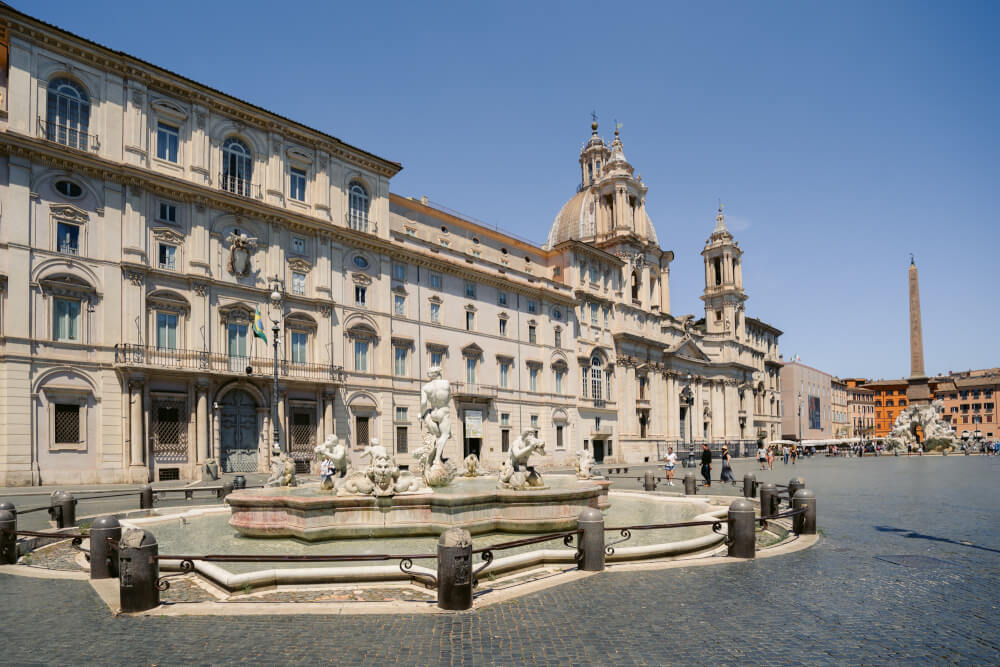
9. Track history at Castel Sant’Angelo
The Castel Sant’Angelo is a really special Roman attraction because of its colourful history. Few monuments in Rome have evolved with the city’s history and power struggles as much as this one, which has been around since the 2nd century.
Originally built as a mausoleum for Emperor Hadrian, it was later converted into a castle by the Popes, who from the 14th century onwards began to add their own little flourishes like chapels and statues to glam up the place to their liking.
Luckily they got a lot of use out of it – not only has Castel Sant’Angelo been a fortress and safe haven, it has also been used as a prison, and more recently, even a film set, where it starred as a key location in Angels & Demons and Eat, Pray, Love.
There aren’t many attractions in Rome that quite capture the city’s evolution from the Ancient Roman Empire to its present day pop culture stardom, so this Castel is definitely worth a visit!

10. Explore some of Rome’s 900+ churches
Yes, Rome really does have over 900 churches. That’s one of my favourite nerdy Rome fun facts.
So, it goes without saying that one of the top must-dos while visiting Rome is a bit of church hopping.
Here are some unique churches to add to your list:
- Chiesa di Sant Ignazio di Loyola: Home to incredible frescos that offer a cool and unique optical illusion
- Chiesa di Santa Maria della Vittoria: Home to The Ecstasy of Saint Theresa, one of Bernini’s most famous sculptures
- Basilica di Santa Maria in Cosmedin: Home to the famous Mouth of Truth and the supposed skull of Saint Valentine

11. Head to Rome’s biggest ‘wedding cake’
The gleaming Neoclassical monument in the center of Piazza Venezia goes by many names, from the Vittoriano and the Altar of the Fatherland (which refers to the central altar of the monument), or much more whimsically, the “Wedding Cake” or “Typewriter”.
This pristine marble monument was constructed in the late 19th century to commemorate Vittorio Emanuele II, the 1st king of a unified Italy. It was officially inaugurated in 1911, 40 years after unification.
With an eclectic design by Giuseppe Sacconi, this controversial piece of architecture was inspired by famous Hellenistic monuments like Pergamon Altar, with a design incorporating a grand staircase with an elegant colonnade, and plenty of statues commissioned from renowned sculptors from across Italy.
Since 1921, the monument has also housed the “Tomb of the Unknown Soldier”, a shrine dedicated to those who perished and sacrificed their lives during World War I. The tomb is guarded by two eternal flames and two soldiers, who stand there at all hours of the day.
While it’s controversial, this mammoth structure is (to me) a must-see in Rome because It’s completely free to visit, with only an additional fee for the elevator ride up the terrace if you so choose.
Fun fact: The 12m high bronze statue that stands in the center of the monument is actually the biggest statue in the entire city, so large in fact that they hosted celebratory drinks inside the horse’s belly before they put the statue together. See the photo here for yourself!

12. Slurp up quintessentially Roman pastas
Rome is responsible for some of the tastiest and most popular pasta dishes on the planet, so it makes sense that one of the top must-dos when in Rome is simply slurping your way through them all with reckless abandon.
Here is a short list of classic Roman pasta dishes you need to try while you’re in town. Do note that pasta shape can vary from restaurant to restaurant, so it’s the second non-bracketed half you should pay attention to.
- (Spaghetti) Carbonara: Pasta with eggs, cheese and cured pork
- (Tonnarelli) Cacio e Pepe: Pasta with cheese and pepper
- (Bucatini) All’amatriciana: Pasta with tomato, cheese, and cured pork
- (Spaghetti) Alla Gricia: Pasta with cheese, black pepper and cured pork
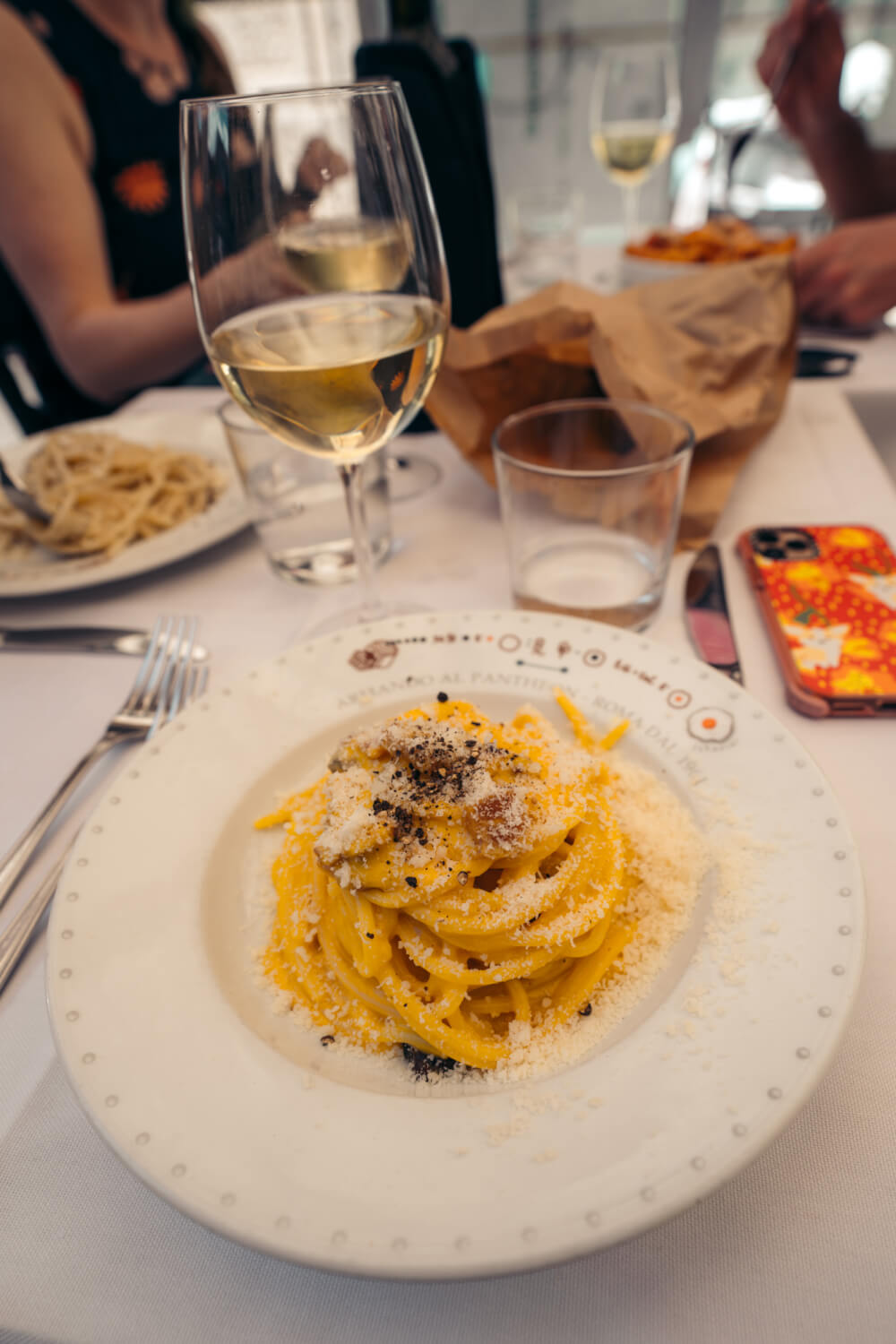
13. Try Rome’s tastiest street food
The almighty Trapizzino is a beloved Roman street food that combines pizza and sandwiches for a thrilling triangular result. Finding one isn’t hard – just look for the closest Trapizzino location near you (there’s quite a few these days around the city). I admit these can get messy, but they’re definitely a great option for a quick, affordable and quintessentially Roman bite.

14. Visit Vatican City
Nestled within the heart of Rome, Vatican City stands as the world’s smallest independent state, yet it boasts an unrivalled wealth of art, history, and spirituality.
Vatican City is the headquarters of the Roman Catholic Church. It’s where the Pope lives and works as both the bishop of Rome and head of the Catholic Church. While it’s an important site of pilgrimage for Catholics, it’s also an incredible place to see even if you’re not religious.
The sheer grandeur of St. Peter’s Basilica, with its iconic dome that seems to touch the heavens, is enough to take your breath away. As you step into this magnificent basilica, the awe-inspiring beauty of Michelangelo’s Pieta and Bernini’s Baldacchino will leave you speechless.
Other must sees include the Vatican Museums, which house an unparalleled collection of art and historical treasures, including the world-famous Sistine Chapel, where you can gaze up at Michelangelo’s masterful ceiling and ‘The Last Judgment’ fresco.
There’s also the Vatican Gardens, a tranquil oasis within this bustling city-state, also offer a serene escape for contemplation and reflection.
And of course, don’t forget to explore St. Peter’s Square, where you’ll be greeted by the monumental obelisk and surrounded by the embrace of the colonnades designed by Gian Lorenzo Bernini. If you time it right, you might even witness the ritual of the Papal Audience, a unique opportunity to see the Pope and receive his blessings.
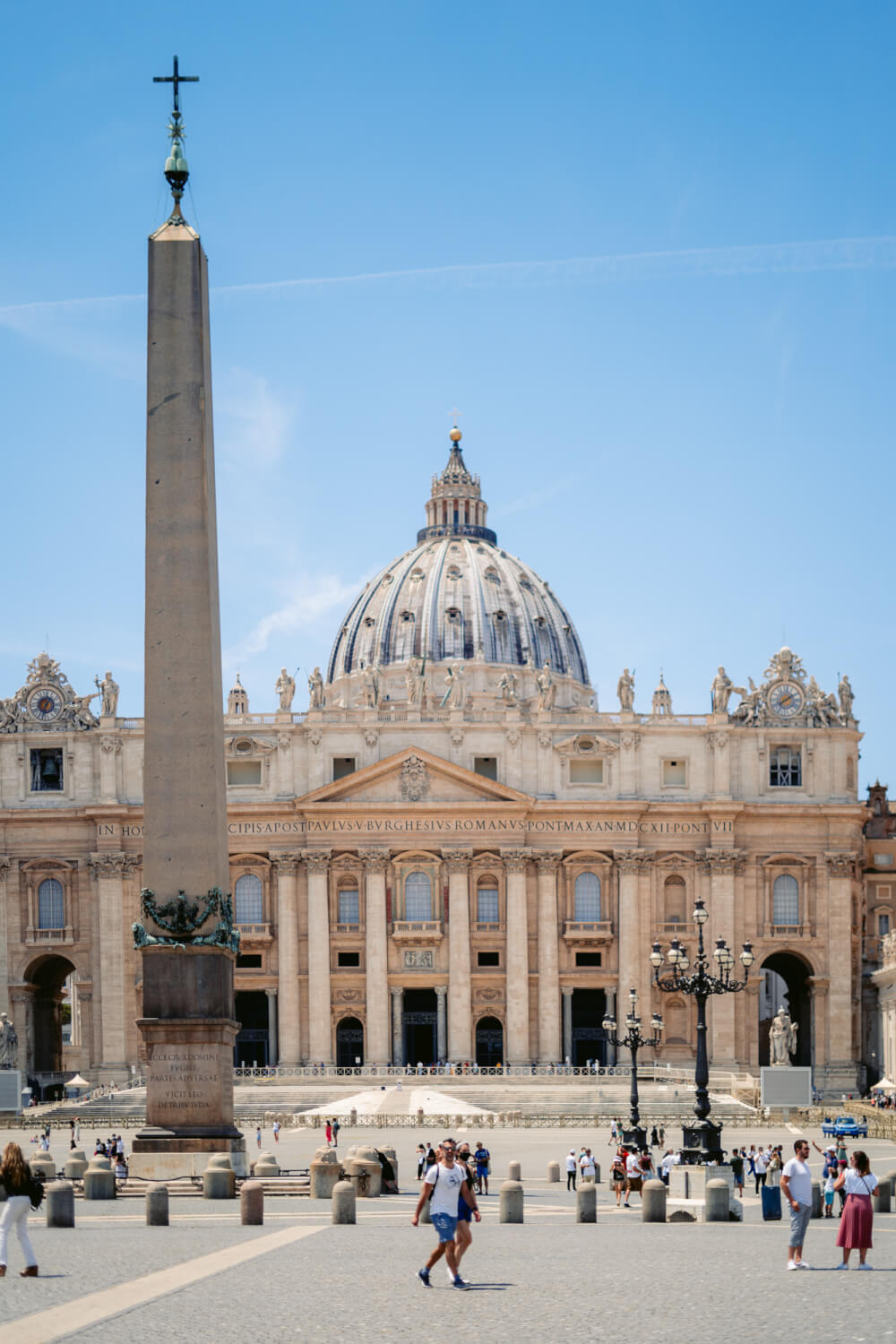

15. Visit Villa Borghese
Villa Borghese is one of Rome’s prettiest and largest public parks, home to a number of villas and museums, including the Galleria Borghese, one of Rome’s most famous art galleries.
Galleria Borghese is home to many beautiful paintings, sculptures and antiquities. It’s particularly famous for housing pieces by famous Italian artists such as Caravaggio, Titian, Raphael and Rubens. The collection is spread out over 20 rooms across two floors – and make sure you look up to see some stunning ceiling frescoes as well.
There’s also a fun opportunity to rent a rowboat if you fancy a quick but affordable paddle (less than 5 euro for 20 minutes!), though be warned that the lake is 100% filled with other tourists who have no idea how to row boats, so the experience is less ‘the Notebook’ and more like an on-water edition of bumper cars.
Lastly, while here, don’t forget to soak in the beautiful views from Terrazza del Pincio, the Pincio Terrace. This is one of the best panoramic views in the city, and a great place to get your bearings when in town. It’s also a highly popular sunset spot, so you might want to consider coming back later with a bottle of wine in hand.
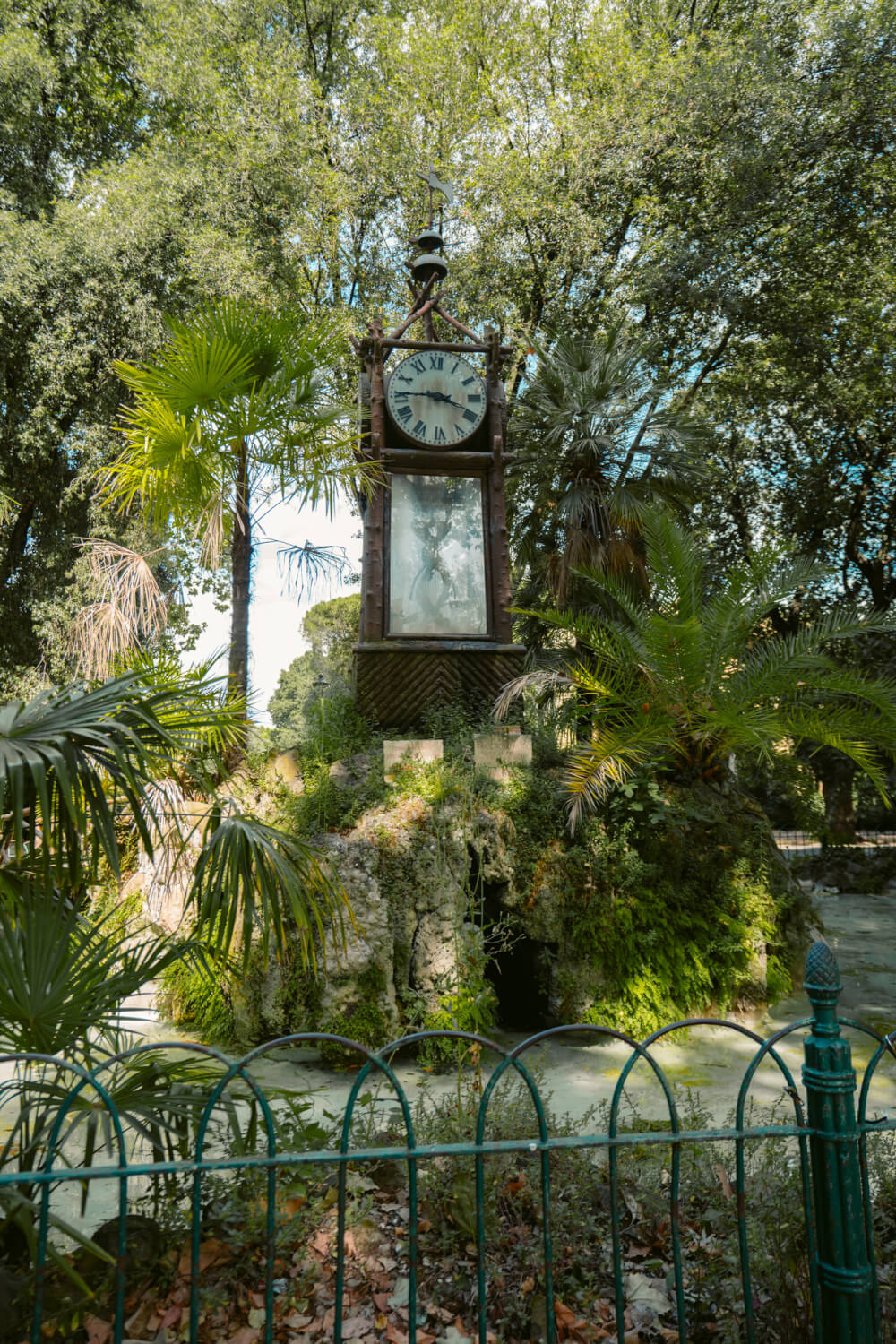
16. Ogle the epic Trajan’s Column
Another Rome must-see is the (almost) 2000-year-old Trajan’s Column.
At first glance, this 30m tall column may seem like any of the other columns liberally scattered around the city, but take a closer look and you’ll see the impressive details that actually tell an epic story, an old school bas relief comic strip of sorts that chronicles Emperor Trajan’s victory in the Dacian Wars in the early 2nd century.
This victory was so huge for Rome back in the day that they literally partied for 123 days after. The riches they accumulated from the victory would go on to finance Rome’s ongoing conquests and expansion, while (of course) cementing Trajan’s respect in the eyes of his people.
Naturally then, it seemed like a no-brainer that he erected this giant victory column which depicts key moments from the wars in impressive detail.
A surprising fact to most visitors is that the column is actually hollow, and home to an impressive spiral staircase that opens up to a unique view of Rome. Sadly, this staircase is no longer open but it would have been cool to go up there!
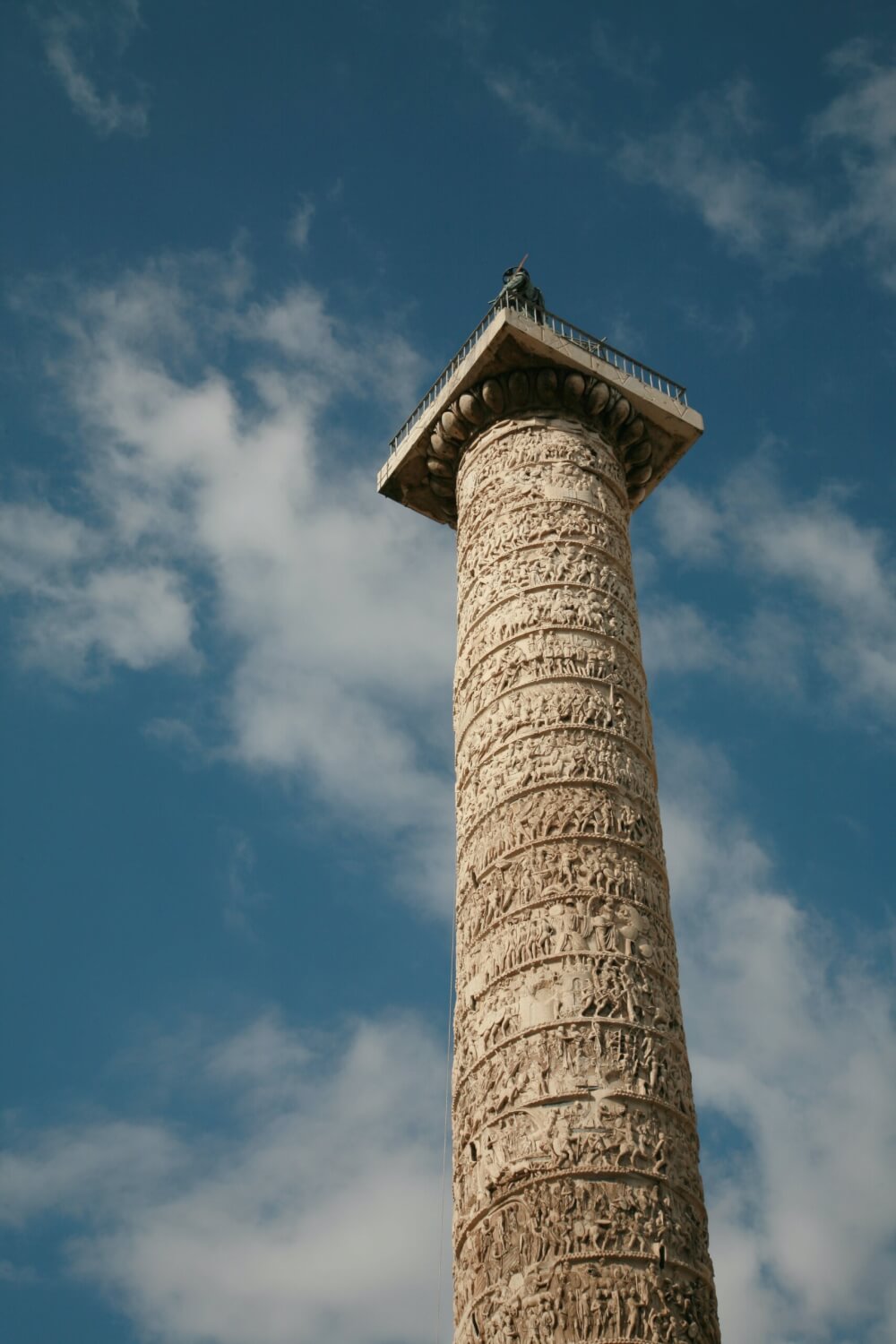
17. Visit (perhaps) the oldest shopping mall in the world
Trajan’s markets are an impressive 2nd-century complex spanning six stories and over 150 rooms. While their exact use was likely a combination of commercial and administrative activity, some consider these markets to be the world’s first-ever shopping mall… although there’s nary a Jamba Juice in sight.
Dating back to around 100–110 AD, the semi-circular market was designed by the architect Apollodorus of Damascus, featuring multi-level shops and apartments, many of which you can still visit today. This site is also home to the ‘Museo dei Fori Imperali’, or the Museum of the Imperial Forums where you can learn more about the Forum of Augustus, Forum of Caesar, Forum of Nerva, Forum of Trajan and the Temple of Peace.
One of the best things about this particular attraction is that you start by seeing a multimedia recreation of how the markets would have looked during the height of Imperial Rome before getting to wander among the ruins as they stand today.

18. Meander through Giardino degli Aranci, AKA Parco Savello
A great relaxing thing to do in Rome is a visit to the Giardino degli Aranci (also commonly known as Parco Savello). This leafy garden on Aventine Hill is lined with its namesake orange trees, which offer some much-needed relief from the sun in peak season.
The garden’s current design by Raffaele De Vico dates back to only 1932, when the scenic viewpoint/terrace was installed to give visitors a better view over the city.
… And what a view it is!
This is definitely one of the prettiest panoramic vantage points you can enjoy in the city, with an ultra-romantic atmosphere too, particularly at sunset.
One of the main tourist attractions at this park is a fountain at the entrance which contains a marble mask that used to adorn a fountain at the Campo Vaccino market in the centre of Rome. It was dismantled in 1816 from there and then reassembled in 1827 on a fountain next to the Tiber River before that fountain was demolished. After storage in municipal warehouses, it was eventually placed here in Parco Savello, making it a very well-traveled mask!
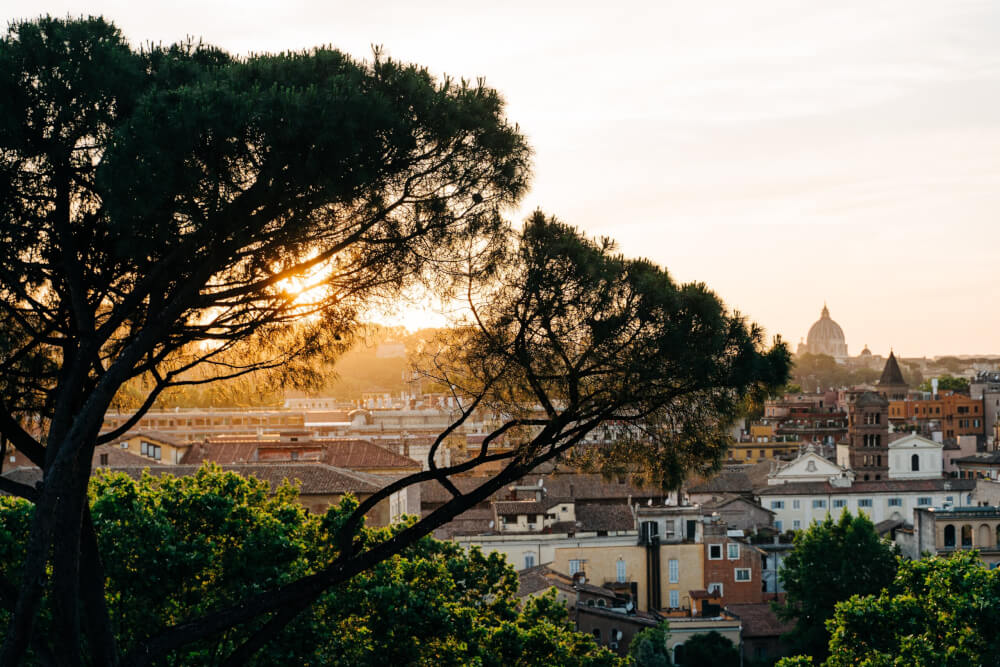
19. Peek Through Il Buco della Serratura dell’Ordine di Malta, AKA Rome’s Keyhole
This famous keyhole can be found at the entrance of the Villa del Priorato di Malta (the Villa of the Priory of the Knights of Malta). Its claim to fame is the unique view of St Peter’s Basilica that you can access through the keyhole, which is perfectly framed by hedges to create a surreal and dreamy postcard view.
While waiting in line to look through a keyhole does indeed make you feel like an irreprehensibly cheesy tourist, the perspective is indeed very cool, and well worth a quick peek… Although I warn you, capturing a good photo is close to Mission Impossible!
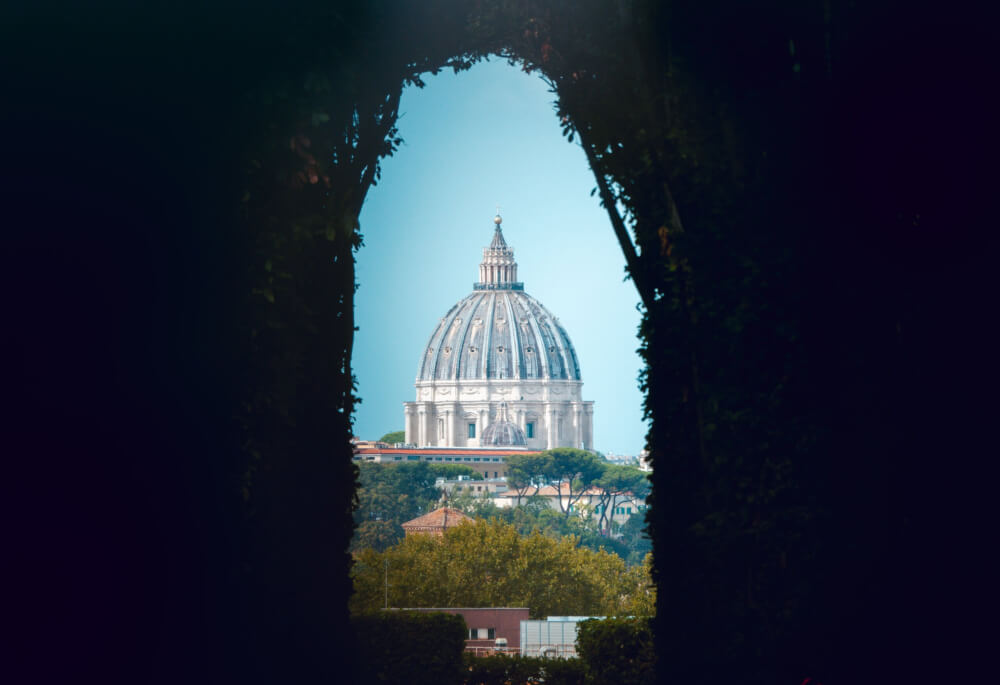
20. See the cat sanctuary where Caesar was murdered
Over in the Largo di Torre Argentina, you’ll find some of the most interesting ruins in Rome, set among an ensemble of modern shops, cafes, and restaurants.
Discovered in the 1920s during city building works, this unique piece of history includes ruins from four ancient temples (likely built to commemorate victories), the ancient Theatre of Pompey and, most significantly, the Curia of Pompey, which is where Julius Caesar was famously stabbed to death by traitors in his Senate back in 44 BC.
Of course, despite this (huge) historical significance, the ruins are perhaps best known these days for being home to a thriving cat sanctuary, so don’t be surprised if you spot a furry friend or two frolicking around the ancient site.
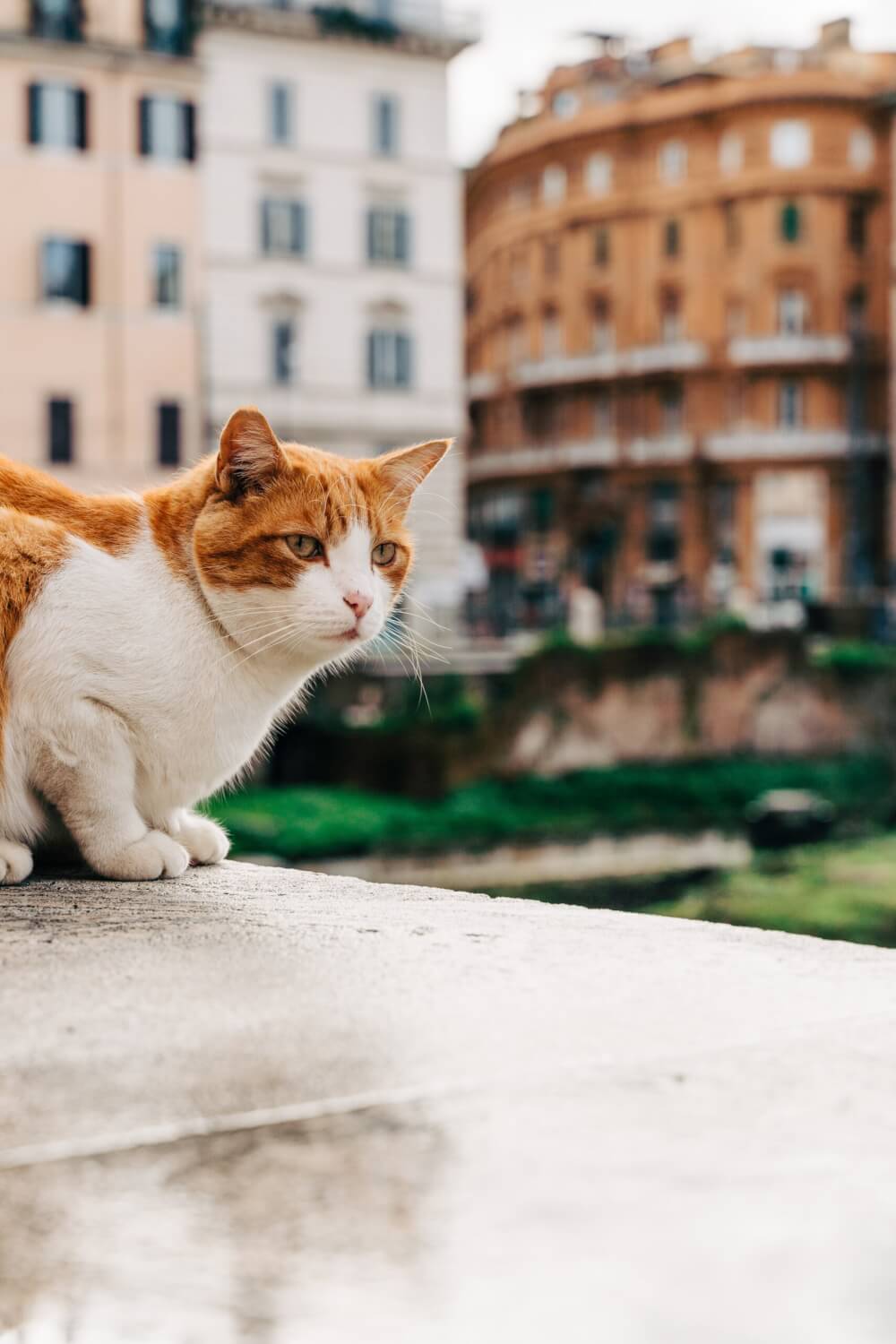
21. Explore Quartiere Coppedè
If you’re looking for something more unexpected and quirky to do in Rome, check out Quartiere Coppedè. This wacky neighbourhood is tucked away in the northern part of the city in the Trieste district.
Here, you’ll find a real mishmash of styles – with everything from Ancient Greek vibes to Roman Baroque, a touch of Mannerism, some medieval flair, and a whole lot of Art Nouveau flourish. This architectural fever dream was brought to life by Gino Coppedè back in 1919, and remained a passion project of his until he passed away in 1927.
Immortalized in countless films over the years, today Quartiere Coppedè sprawls across a massive 31,000 square meters with around 40 different buildings! You’ll find Florentine towers, Venetian palaces decked out with mosaics and frescoes, Baroque Roman digs with some serious papal vibes, a sundial, and even a place dedicated to a musical theme – with ironwork and carvings that look like musical notes.
For lovers of architecture, this slice of Rome is definitely worth a visit.
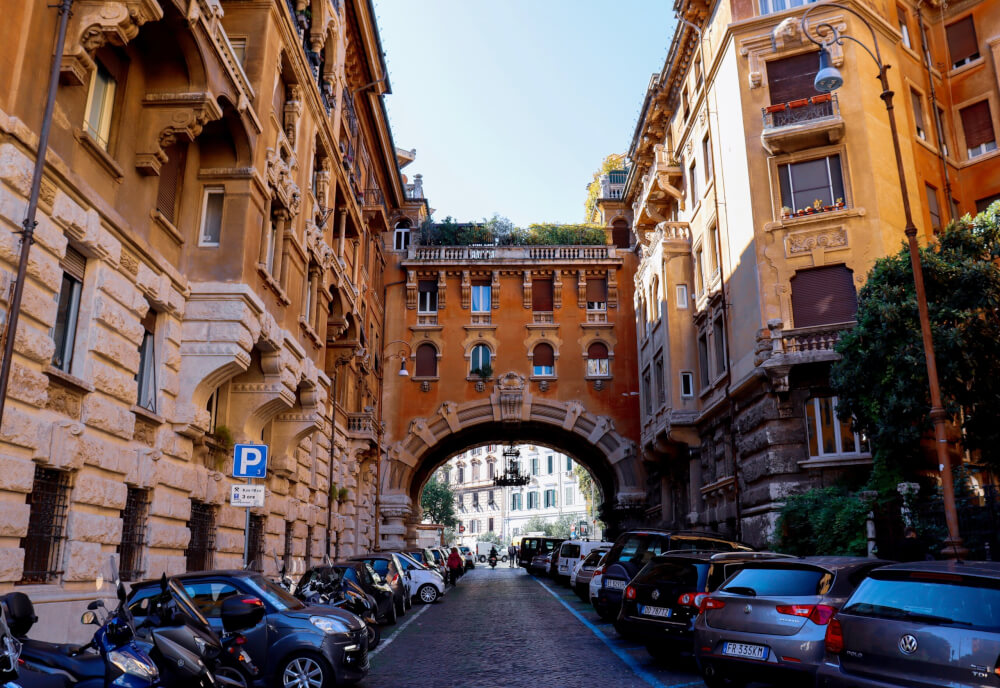
22. Visit a real Egyptian pyramid
Rome went absolutely wild for all things Egyptian back in 30 BC when they conquered Egypt. So much that they couldn’t get enough of the pyramids and started putting up giant copies. Once upon a time, there used to be two pyramids in town, but now there is just one left – the Pyramid of Cestius.
This 120-foot-tall beauty was probably built around 18-12 BC as a fancy tomb for some rich Roman who was aggressively into Egyptian vibes. But here’s the twist – we don’t know much about him because the tomb got raided ages ago, and the area around it has changed a bunch over time. Nowadays, it’s just casually chilling at an intersection near a big train station!
Strangely though, this pyramid is way steeper than the famous ones in Egypt. Maybe the Romans got some bad info from the Egyptians, or maybe they just decided to get creative with their concrete-building skills. Some say they might’ve taken inspiration from the Nubian pyramids near Jebel Barkal, down in Sudan. Either way, if you want a taste of Egypt right here in Rome, check out the Pyramid of Cestius.
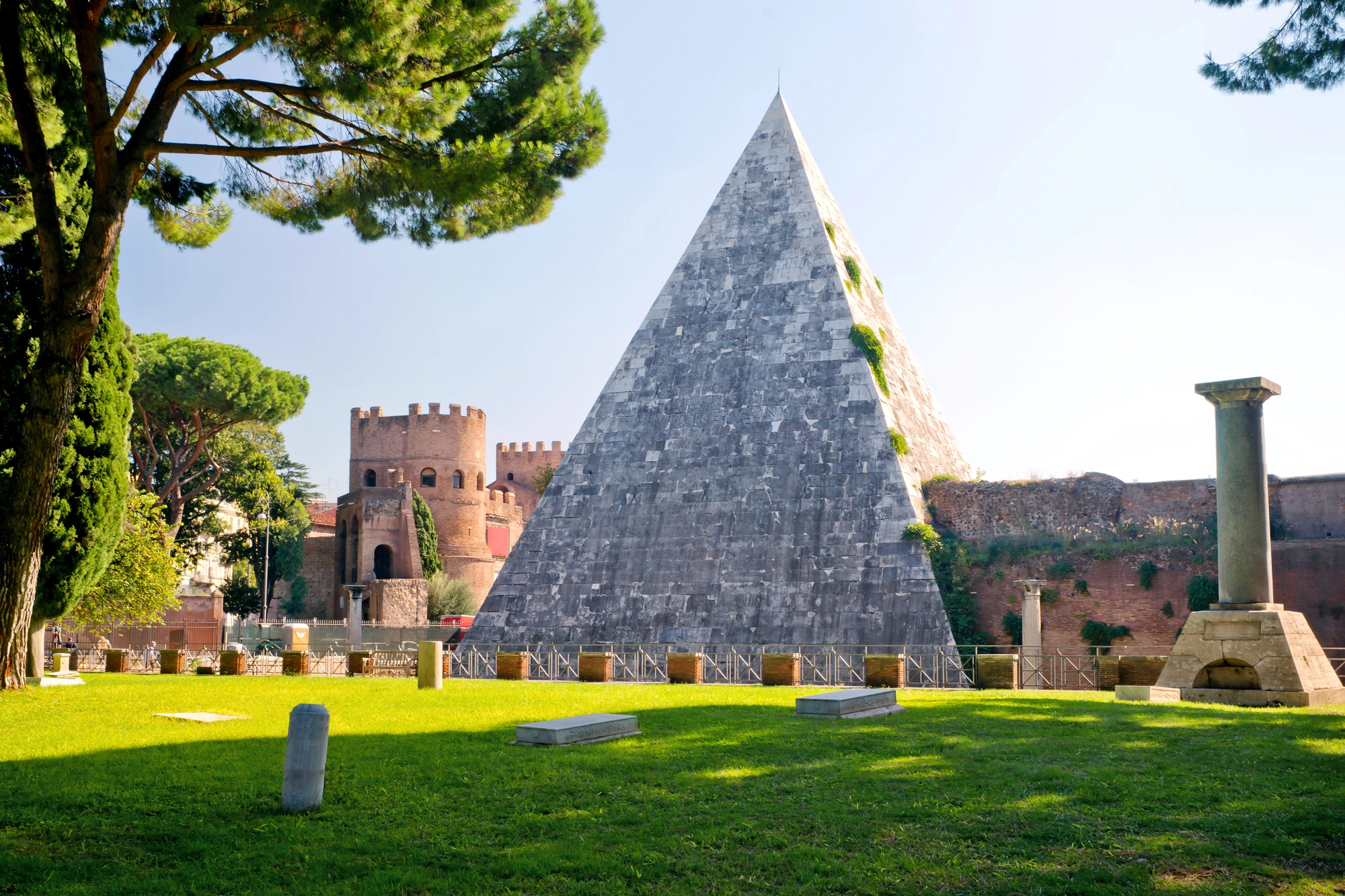
23. Visit the world’s first catacombs
If you’re up for a little adventure along the first four miles of Via Appia, you’re in for a treat – The Catacombs of San Sebastian await. In 350 AD, the remains of San Sebastian were interred at this location, prompting the construction of a basilica in his honour in the early 4th century.
The area gained the name ‘ad catacumbas,’ signifying ‘near the hollows,’ due to the presence of nearby excavated mines, marking the first usage of the term ‘catacombs’ to denote underground Christian burial chambers. Over the centuries, the site has attracted countless pilgrims who come to pay homage and view the relics housed within the basilica.
Dedicated to San Sebastian, a martyred saint, the basilica is home to the very arrow that is said to have pierced him during his execution. Additionally, the basilica boasts a set of marble footprints believed to have been left by Jesus during his journey along the Via Appia!
24. Visit Rome’s own fairytale castle, Casina delle Civette
Looking for something truly offbeat to do in Rome? Hidden within the grandeur of Villa Torlonia in Rome lies an actual fairy tale castle, created by the eccentric Giovanni Torlonia. As the last descendant of a noble Roman family with French roots, Giovanni completely transformed what was once called “The Swiss Hut” into a Disney masterpiece.
Originally a modest retreat nestled behind a hill away from the main villa, the Swiss Hut underwent a remarkable metamorphosis under the solitude-loving Giovanni Torlonia Jr.
Today, his dream mansion seamlessly blends medieval elements with captivating Art Nouveau eccentricities, making it an absolute must-see for lovers of quirky castles and architecture.
Formerly known as the “Villaggio Medievale” (medieval village), it gained fame for its exquisite stained-glass windows adorned with birds, flowers, plants, and, most notably, owls, from which the house now derives its name.
After being occupied by the American military during liberation, the castle fell into disrepair, suffering abandonment and vandalism. A devastating fire in 1978 further marred its splendor, stripping it of much of its value. Fortunately, from 1992 to 1997, extensive restoration efforts painstakingly returned this architectural gem to its former glory!

25. Admire the opulence of Palazzo Doria Pamphilj
The Doria Pamphilj Gallery (AKA Doria Pamphili Gallery) is possibly Rome’s best-kept art secret.
This massive private collection of paintings, furniture, and statues has been growing since the 16th century thanks to the Doria, Pamphilj, Landi, and Aldobrandini families – who are all joined together through marriages, and now go by the fancy name Doria Pamphilj.
It all started when Innocent X left the paintings and furnishings from his swanky Palazzo Pamphilj in Piazza Navona to his nephew Camillo Pamphilj. The Palazzo itself has grown over the years and is probably one of the biggest privately owned art collections in Rome.
Most of the art is displayed in the state rooms, including the chapel where they’ve got the mummified remains of the family saint – yup, you read that right! There are also four gilded and painted galleries surrounding a courtyard where the rest of the collection is displayed.
Alongside the Colonna and Pallavicini-Rospigliosi families, this place ranks as one of Rome’s biggest private art treasures. Trust me, it’s a hidden art paradise you don’t want to miss!

26. Check out the giant Baths of Caracalla
Looking for a slice of ancient Roman luxury in Rome? The Baths of Caracalla, also known as Terme di Caracalla, should be at the top of your list.
Once Rome’s second-largest public baths, built sometime between AD 211 and 217 during the reigns of emperors Septimius Severus and Caracalla, they operated until the 530s before gradually falling into disrepair and abandonment.
Of course, these baths were more than just a place to get clean; they were an architectural marvel that inspired numerous other historic and modern structures worldwide. You’ll find echoes of their design in places like the Baths of Diocletian, the Basilica of Maxentius, and even iconic buildings like the original Pennsylvania Station in New York City, Chicago Union Station, and the Senate of Canada Building!
During your visit, you can discover artworks recovered from the ruins, including famous sculptures like the Farnese Bull and the Farnese Hercules. Today, the extensive ruins of the Baths of Caracalla have become a must-visit tourist attraction, offering a glimpse into the grandeur of ancient Rome. Movie buffs might even recognize these baths as a filming location for John Wick: Chapter 2.
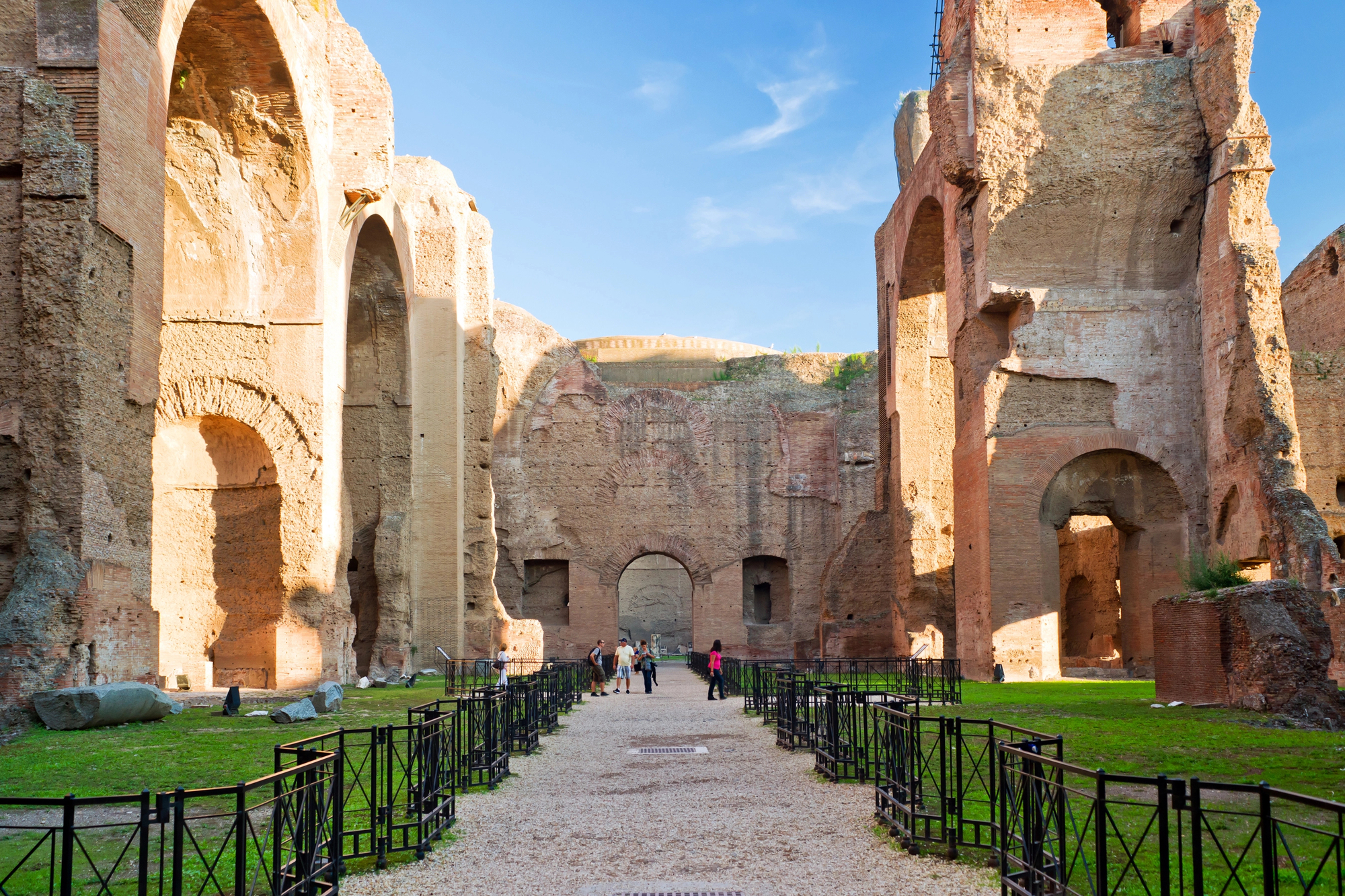
27. Visit the giant mausoleum of Rome’s first emperor
Rome’s Mausoleum of Augustus is a historic treasure built by the first Roman Emperor, Augustus, back in 28 BCE.
This circular tomb, possibly inspired by Hellenistic mausoleums, once stood at the heart of the city, near the Tiber River. It featured concentric rings and a conical roof, possibly crowned by a statue of Augustus himself. Two obelisks once guarded its entrance, now found elsewhere in Rome. Nearby, the Res Gestae Divi Augusti, a significant inscription detailing Augustus’s achievements, could be found.
This mausoleum served as the resting place for Augustus and several members of the Julio-Claudian dynasty, along with other emperors over time. Unfortunately, it suffered damage during the Visigoth invasion in 410 CE, and centuries later, it was buried beneath the earth. Eventually, a fortification was built on top. In the 20th century, it briefly served as a concert hall before being restored as an archaeological site which you can now visit.
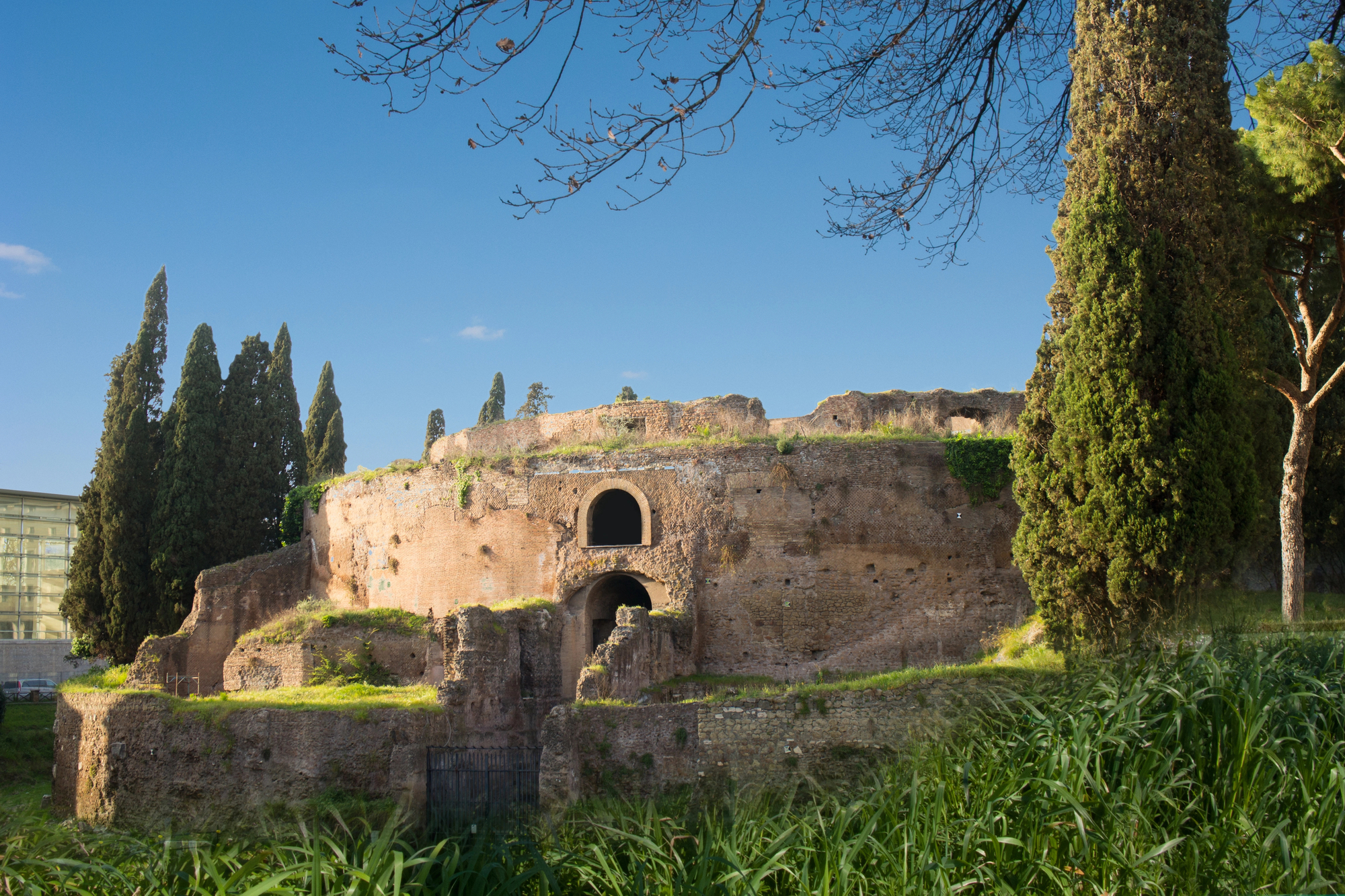
28. Visit a museum dedicated to Vespas
Looking for a quirkier museum to visit in Rome? Well, there’s a hidden gem for Vespa enthusiasts beneath the Bici & Baci bike hire shop near the Imperial Forum. Yes, a true Vespa shrine! Down in their basement, you’ll find a sweet collection of vintage Vespas from different decades.
Here, visitors can browse through vintage ads, mannequins dressed in snazzy period outfits, and even photos of Hollywood stars like Charlton Heston, Audrey Hepburn, and Gregory Peck cruising on Vespas. The museum was opened in 2013 by Claudio Sarra, the owner of Bici & Baci, to celebrate the Vespa’s 60th anniversary in style. And it’s totally free to check out! So, if you’ve got a soft spot for these stylish scooters, you’re in for a treat.
29. Do an E-Bike tour by night (with a wine tasting)
Alright, having covered most of the main activities in Rome, I’m now going to finish off with some unique Roman experiences to potentially add to your list. First off – a night-time bike tour!!
I might not be the most coordinated person on the planet but even I can see the value of a good bike tour of a city, especially one as big and as packed with sights as Rome!
An e-bike night tour makes any of the ‘work’ of cycling around even easier than normal, plus this particular tour includes some cheese and wine tasting before you even get started.
Then you’ll get to enjoy some of the most famous attractions in the city without the hordes of tourists. For those who love a bit of night photography, this is also the perfect way to get some stunning and unique shots of the Colosseum, Pantheon, Trevi Fountain and more.
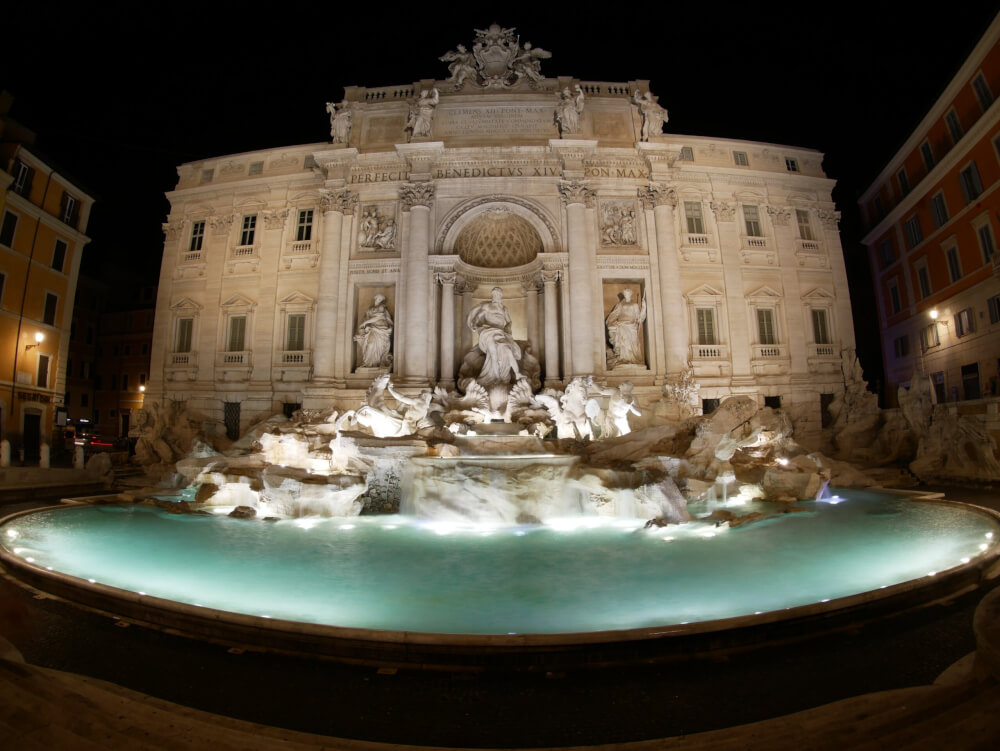
30. Rent a Vespa
I mean… is there any activity that screams “Rome” more than zooming around the city on a Vespa?!
Vespa scooters are, of course, an Italian brand but it’s their iconic use in films such as Roman Holiday (which Audrey Hepburn won an Oscar for), The Talented Mr Ripley, Alfie, and of course, the Lizzie McGuire Movie that has made them so popular with visitors to Rome.
If you want to live your own La Dolce Vita through the streets of Rome you can do so by hiring one for a few hours to up to a week! It’s the perfect way to get around the Eternal City, not to mention the most romantic.
… or, if you’re less confident in your ability to whizz around Rome solo, you could do a Vespa tour like this one!
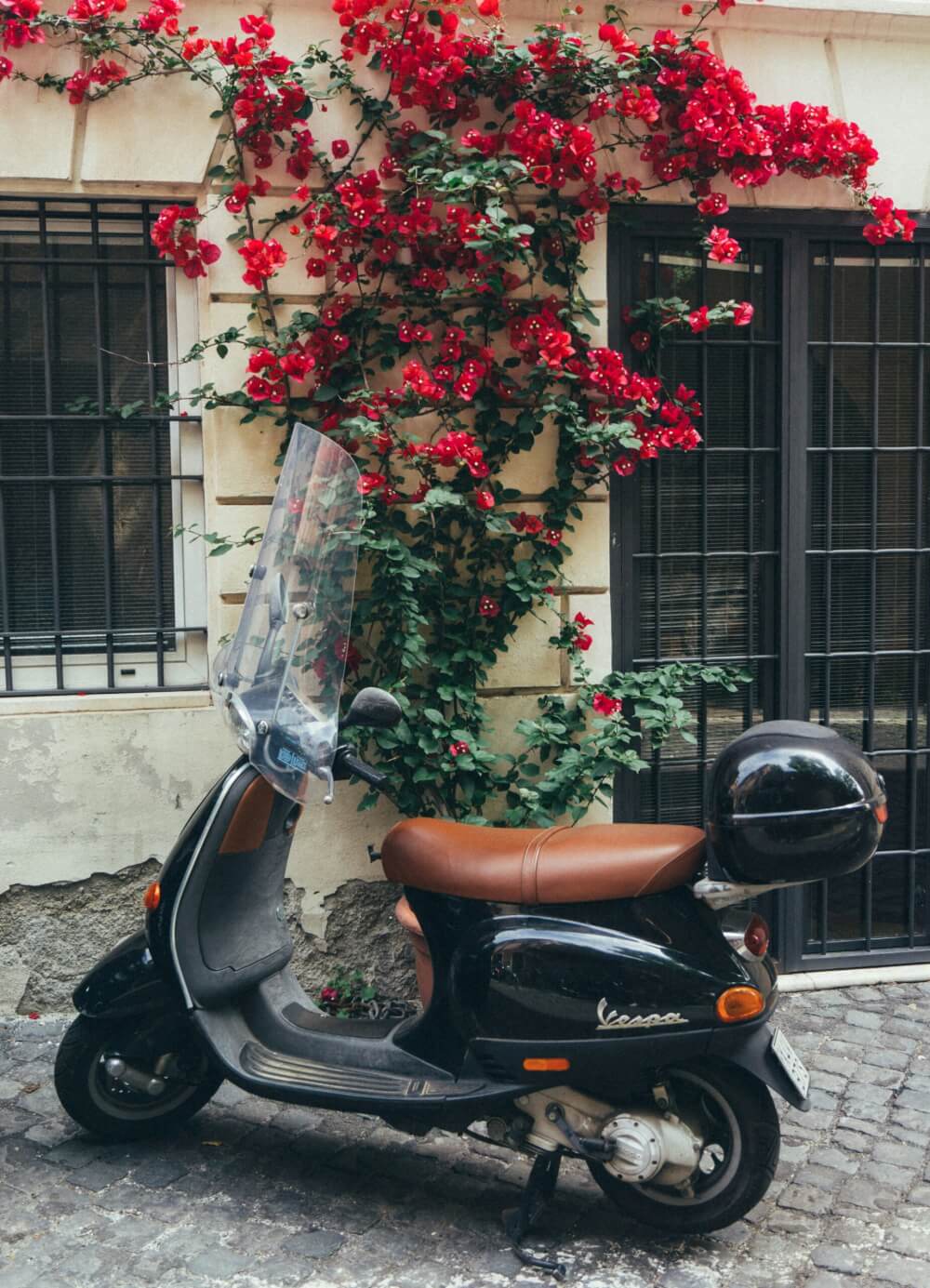
31. Do an espresso, gelato & tiramisu tour
Aside from pasta, some of the most delicious Italian treats you must try while in Rome are espresso, gelato and tiramisu.
And while I can wholeheartedly recommend just DIYing your own expedition involving these three, if you’d like to save some time and research, a fun Rome activity you can easily book is a gourmet tour that shows you all the best spots for sipping tiny cups of espresso, savoring mouthwatering slices of tiramisu, and indulging in the most heavenly ice cream in town.

32. Tour around in a Vintage Fiat 500
Another outrageously cute way to get around Rome? How about a 90-minute tour in a vintage FIAT 500, designed to manoeuvre through the narrow and crowded streets of Italy?
Kicking things off just a stone’s throw away from the Colosseum, you’ll hop into your vintage ride while your chauffeur takes you on a whirlwind tour of Rome’s hidden gems – the spots most tourists miss out on. Take in breathtaking views from the Garden of Lovers on Aventine Hill and sneak a peek through that mysterious keyhole at the peaceful Piazza dei Cavalieri di Malta.
And for the grand finale, you’ll zip over to Janiculum Hill, where you can enjoy panoramic views of the Pantheon, Villa Medici, and the Altar of the Fatherland from on high.
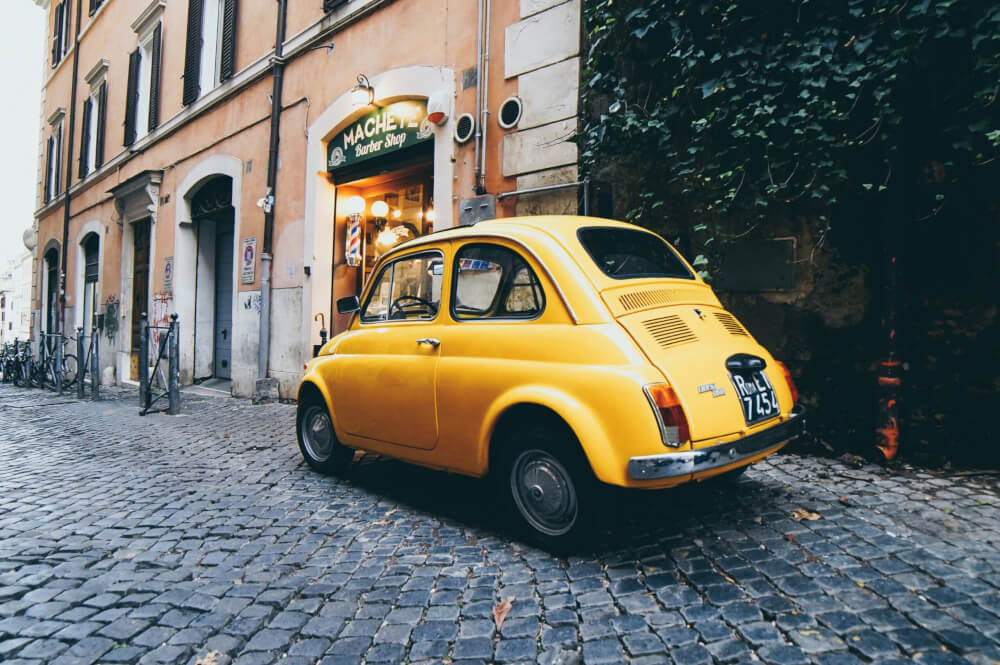
33. Tour the Ancient Appian Way on a bike & visit Catacombs
Wanting to explore a bit more outside of Rome’s historical centre? A fun side trip is exploring the ancient wonders of Rome on an E-bike adventure like this one that takes you along the Ancient Appian Way, a road that’s been around for over 2,400 years! Think of it as riding a time machine through Rome’s rise, golden era, and decline.
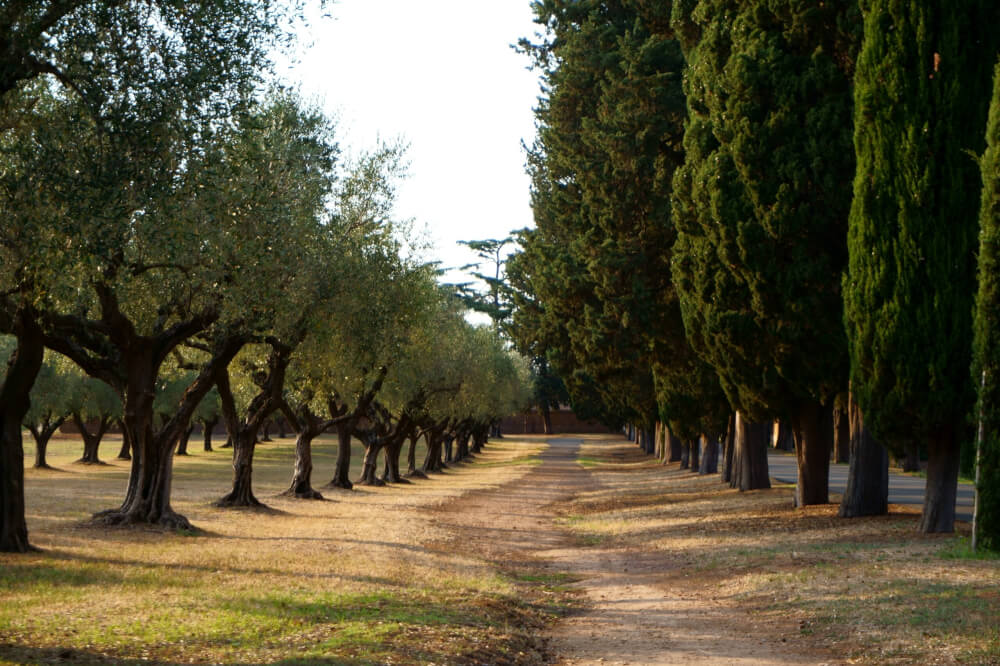
34. Do a hot air balloon ride over the Tiber Valley
Or, if you want something truly unforgettable, why not hoist yourself up into the sky with a hot air balloon flight?
In this fun experience just an hour outside the city (in the charming town of Magliano Sabina), you get to ascend high above the picturesque Tiber Valley for breathtaking aerial views of iconic landmarks like Villa d’Este and Villa Adriana, bringing a fresh perspective to these historical treasures.
35. Visit a McDonald’s within a Roman wall
Lastly, I have to share one of my favourite hidden gems in Rome: the McDonald’s at Rome Termini Station.
OKAY – I get it, that doesn’t sound like the most exciting thing to do in Rome, but it’s special to me because it’s (probably) the only McDonald’s in the world to have a giant slab of ancient Roman wall in it.
Yup – the Servian Wall was constructed around the 4th century B.C. during the reign of King Servius Tullius. There are pieces of it throughout the city, but this particular chunk was discovered during the construction of the underground shopping mall at Termini Station, so of course they just incorporated it into the McDonald’s dining area.
Now you can have your Big Mac next to a 2,500-year-old chunk of Roman wall and confidently say “Well, when in Rome!”
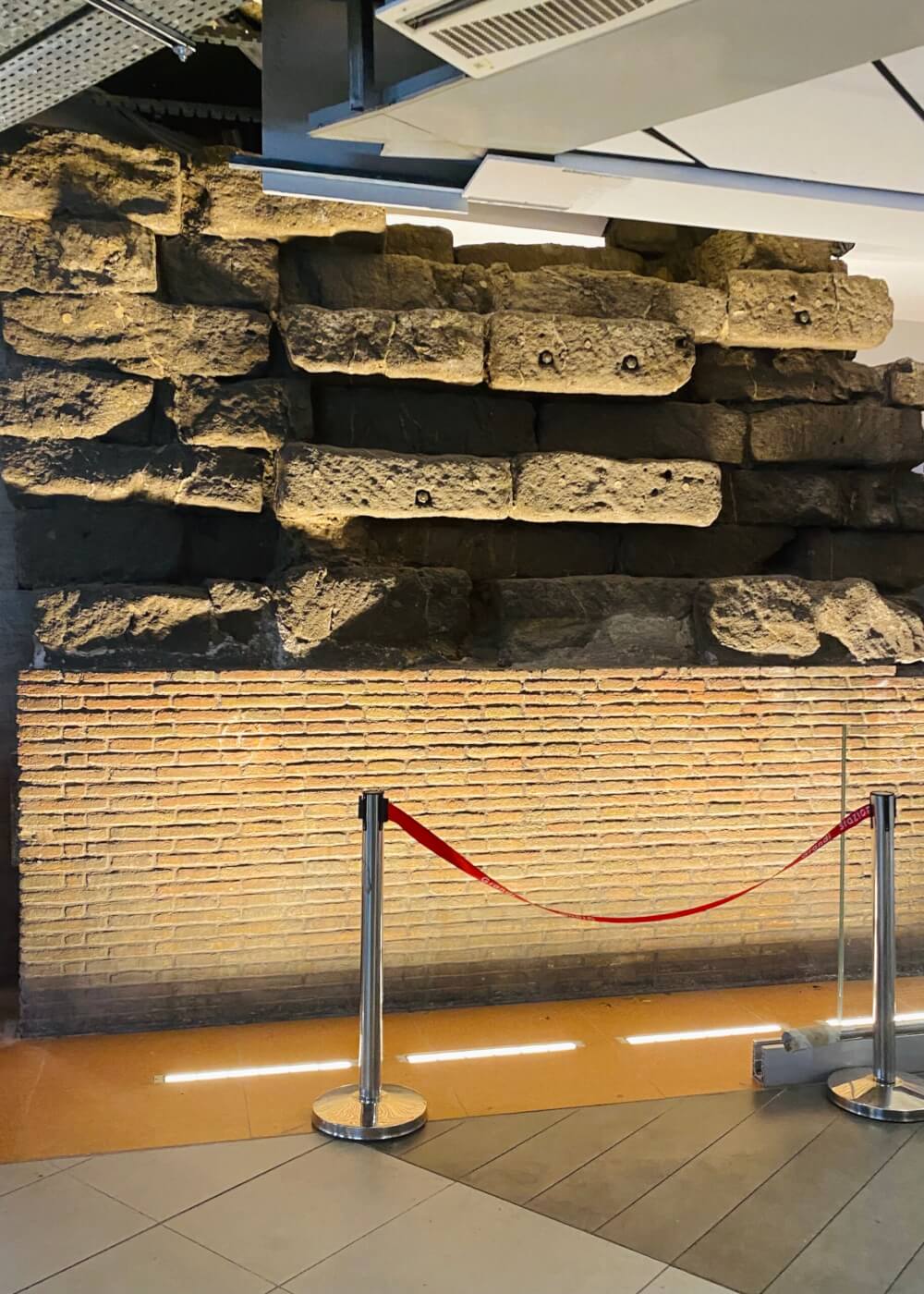
Did I miss any of your favourite things to do in Rome?
Let me know in the comments so I can add more of the best Rome activities to the list. Happy and safe travels! 🙂


